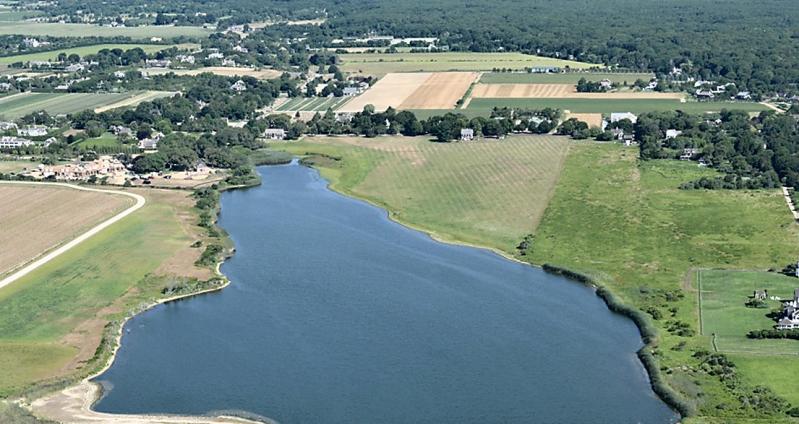Blooms of cyanobacteria, or blue-green algae, have been detected in Wainscott Pond and in Lake Agawam in Southampton, according to analysis by Stony Brook University.
Suffolk County health officials have asked residents not to use, swim, or wade in the water bodies and to keep children and pets away from the area.
Though blue-green algae are naturally present in lakes and streams in low numbers, they can become abundant, forming blooms in shades of green, blue-green, yellow, brown, or red. They may produce floating scums on the surface of the water or may cause the water to take on paint-like appearance.
Both water bodies are ecologically impaired. In April, Christopher Gobler of Stony Brook University’s School of Marine and Atmospheric Sciences described a rapidly worsening condition in Wainscott Pond, telling the East Hampton Town Trustees of 2020 measurements of cyanobacteria “unlike anything we’d ever seen.”
It was part of a mostly bleak assessment of water quality amid an alarming inventory of manifestations of climate change on the South Fork, including rising summer water temperatures. Higher temperatures combined with excess nutrients promote harmful algal blooms such as cyanobacteria.
Cyanobacteria also bloomed in Fort Pond in Montauk last year. But “Wainscott Pond was a different situation,” Mr. Gobler told the trustees, for whom he conducts sampling and analysis of water bodies under their jurisdiction as well as Fort Pond, which is not. Last year, there was not a single measurement in Wainscott Pond below the New York State Department of Environmental Conservation’s high toxins warning of 20 micrograms per liter. Many of the measurements were in the hundreds, he said, with every sample from June to November exceeding the D.E.C. standard.
Contact with waters that appear scummy or discolored should be avoided. If contact does occur, rinse off with clean water immediately. Seek medical attention if any of the following symptoms occur after contact: nausea, vomiting, or diarrhea; skin, eye, or throat irritation, or allergic reactions or breathing difficulties.




